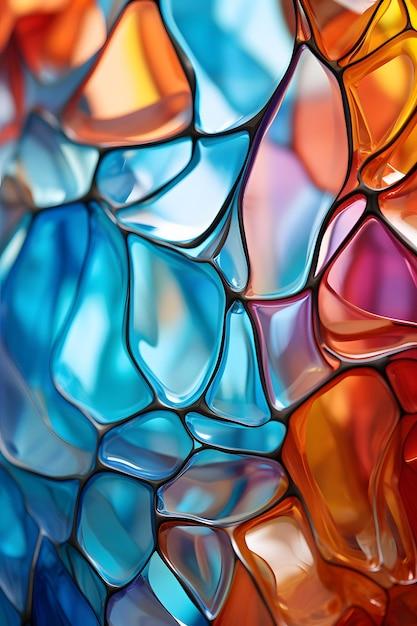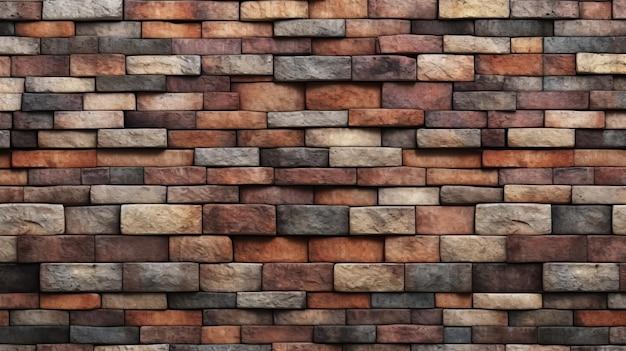Have you ever experienced the frustration of eagerly peeling off the tape and unveiling your epoxy tumbler, only to find it covered in unsightly bumps and imperfections? Don’t worry, you’re not alone! Many avid tumbler makers have encountered this issue, and it can be quite disheartening. But fear not, because in this comprehensive guide, we will delve into the reasons behind bumpy epoxy tumblers and explore effective solutions to achieve that coveted smooth finish.
From dimpling to wrinkles, waviness to craters, we will address the most common problems that can arise while working with epoxy and how you can overcome them. We’ll also share insights on proper curing times, sanding techniques, and additional coats of epoxy to enhance your tumblers’ overall aesthetics. Whether you’re new to the world of epoxy tumblers or a seasoned pro looking for troubleshooting tips, this blog post has got you covered. Let’s dive in and discover the secrets to creating flawless, bump-free epoxy tumblers.

Why is My Epoxy Tumbler Bumpy?
The Science Behind Bumpy Epoxy Tumblers
If you’ve ever found yourself staring at your newly finished epoxy tumbler, puzzled by the unexpected presence of bumps and imperfections, fear not! We’re here to help unravel this mysterious phenomenon. You see, epoxy tumblers, like many things in life, are subject to the laws of science, and sometimes, those laws conspire to create a bumpy surface.
1. Improper Mixing: The Culprit Revealed!
One of the main reasons behind a bumpy epoxy tumbler is improper mixing. Think of it as a turbulent love affair between two components that just can’t seem to get along. When resin and hardener are not thoroughly mixed, they simply refuse to cooperate, causing all sorts of bumps and inconsistencies.
2. Temperature Troubles: Keep Your Cool!
No, we’re not talking about the weather outside – we’re talking about the temperature in the room where you work your epoxy magic. Drastic temperature changes can wreak havoc on your tumbler’s smooth surface. So, make sure to give your epoxy the ideal climate it craves (around 72°F or 22°C), and those pesky bumps may be a thing of the past.
3. Gravity’s Sneaky Effect: Watch Out!
Ah, gravity, that mischievous force that loves to meddle with our best intentions. Sometimes, bumpy epoxy tumblers happen simply because gravity has its way. If you apply too much epoxy at once or tilt your tumbler before it’s fully cured, gravity will seize the opportunity to create a bumpy landscape. Remember, my friend, patience is key in defeating this wily opponent.
4. Those Annoying Air Bubbles: Bursting the Bubble
Air bubbles, the tiny troublemakers of the epoxy world, can also be the culprits behind your bumpy tumbler. Whether they were trapped during the mixing process or made their sneaky entrance afterward, their presence can result in a less-than-smooth finish. But fret not! We’ve got you covered with some handy tips to pop those pesky bubbles and restore the serenity of your tumbler’s surface.
5. The Downfall of Sanding Neglect: Smoothing It Out
Now, my friend, let’s talk about the importance of sanding. If you’ve neglected this crucial step, it’s no wonder your epoxy tumbler is feeling a bit rough around the edges. Sanding helps to smooth out any imperfections, providing a flawless canvas for your artistic endeavors. So, put those elbow grease reserves to good use and give your tumbler the pampering it deserves.
6. Experience Matters: The Learning Curve
Remember, Rome wasn’t built in a day, and neither were perfectly smooth epoxy tumblers. If you’re just starting your epoxy journey, it’s completely normal to encounter a few bumps along the way. Like any skill, mastering the art of epoxy tumblers takes time, practice, and a sprinkle of patience (okay, maybe more than a sprinkle). Embrace the learning curve, my friend, and soon you’ll be creating glass-like finishes that would make Michelangelo himself jealous.
Smooth Sailing Ahead!
There you have it, dear reader, an inside look into the reasons why your epoxy tumbler might be feeling a bit bumpy. Remember to mix thoroughly, control the temperature, outsmart gravity, chase away those air bubbles, and never underestimate the power of sanding. And most importantly, stay patient and keep honing your epoxy skills. Smooth sailing awaits you on the horizon of epoxy tumbler perfection.

FAQ: Why is my epoxy tumbler bumpy?
Have you ever admired a beautifully smooth epoxy tumbler only to be disappointed when your own creation turns out bumpy? Don’t worry, you’re not alone! In this FAQ-style blog post, we will address some common questions and concerns that epoxy tumbler enthusiasts often face. Prepare to smooth out those bumps and create stunning tumblers that will have everyone asking, “How did you do it?”
Why is My Epoxy Dimpling
Dimpling can occur for a few reasons. One possibility is that you might be applying your epoxy too quickly, which causes it to heat up and create air bubbles. Another factor could be the mixing process – insufficiently mixing the resin and hardener can lead to dimples. To avoid this, take your time with the application and ensure thorough mixing. Remember, patience is key!
How Long Do I Let My Epoxy Tumbler Spin
The spinning process for epoxy tumblers, also known as “turning,” is crucial for achieving an even coating. Generally, it’s recommended to let your tumbler spin for at least 6 to 8 hours. However, this can vary depending on the epoxy brand and environmental conditions. Keep an eye on it and be mindful of the resin’s curing time to achieve the desired finish.
How Long Should Epoxy Cure Before Sanding
Before you can embrace the sandpaper and smooth out any imperfections, it’s important to let your epoxy cure fully. Typically, epoxy needs around 24 to 48 hours to cure properly. However, temperatures and humidity can affect the curing time. Patience is once again vital here to ensure a flawless end result.
Why Has My Resin Wrinkled
Resin wrinkles can be frustrating, but don’t fret! The most common cause of resin wrinkling is excessive heat. Avoid placing your tumbler in direct sunlight or near any heat sources during the curing process. Keep that precious epoxy away from hot messes!
Why Did My Epoxy Get Wavy
Wavy epoxy is often a result of uneven application or mixing. If you notice waves forming on your tumbler, try applying thinner coats and make sure you’re mixing your epoxy thoroughly. Remember, smooth and steady wins the epoxy race!
How Do You Smooth Resin After Sanding
After sanding, your tumbler may need some extra love to regain its shine. You can achieve a smooth, glossy finish by using a polishing compound or carnauba wax. Apply and buff it gently onto the surface to bring back that attractive luster. Shine on!
How Many Coats of Epoxy Do You Put on a Tumbler
The number of epoxy coats depends on the desired thickness and effect. One to three coats are generally recommended for most epoxy tumbler projects. However, keep in mind that thicker layers may require longer curing times. Don’t go overboard, though, or your tumbler might start to resemble a disco ball!
How Do You Fix Epoxy Dimples
Dimples are a pesky problem, but fear not – they can be fixed! To repair epoxy dimples, you can either apply a thin coat of fresh epoxy or use a heat gun to gently remove the air bubbles. Be careful not to overheat or bubble up your epoxy further!
Why Is My Resin Not Leveling
If your epoxy is refusing to level out smoothly, chances are you’re not applying it on a level surface. To achieve a leveled finish, ensure that your tumbler is positioned correctly during the curing process. A little attention to detail goes a long way!
How Do You Fix Epoxy Craters
Epoxy craters can be quite the eyesores, but we have a remedy for that! To fix these moon-like craters, you can use a toothpick or a wooden stick to spread a small amount of epoxy over the affected area. Be delicate in your approach and don’t create a lunar landscape on your tumbler!
Why Is My Epoxy Not Smooth on Tumblers
If your epoxy appears rough or not as smooth as you’d like, it could be due to inadequate sanding or curing time. Make sure you’re giving it enough TLC during the sanding process, and allow sufficient curing time for that glass-like finish. Remember, Rome wasn’t built in a day, and neither are perfect epoxy tumblers!
How Do You Smooth Epoxy Edges
To achieve those impeccably smooth edges, you can lightly sand them with fine-grit sandpaper. Start with a lower grit to remove any roughness, then progress to a higher grit for a polished look. Take your time, and those edges will be smoother than a jazz saxophone solo!
What Happens if You Add Too Much Hardener to Resin
Ah, the old hardener mishap! Adding too much hardener can lead to several issues, including excessive heat generation and a sticky, uncured mess. It’s crucial to follow the recommended resin-to-hardener ratio provided by the manufacturer. Avoid epoxy chaos and keep those proportions in check!
Do You Have to Sand Between Coats of Epoxy on Tumbler
Sanding between coats is not always necessary, but it can be beneficial for achieving a flawless finish. Lightly sanding the previous coat helps to create a better bond for subsequent layers. However, be cautious not to sand too aggressively and remove too much epoxy. Keep that sandpaper gentle like a summer breeze!
Can You Pour Epoxy Over Cured Epoxy
Absolutely! If you want to add additional layers or decorations, you can pour epoxy over a fully cured layer. Just make sure to clean the surface and rough it up a bit with sandpaper to help with adhesion. Layer it up and let your creativity shine!
Can You Sand Air Bubbles Out of Epoxy
Sand, sand, sand, but not too much! While sanding can help with surface imperfections, it’s important to note that air bubbles cannot be completely eradicated through sanding alone. To minimize air bubbles, try using a heat gun or a torch to gently pop those pesky intruders. Safety first, though – be cautious and keep it moving!
Why Does My Epoxy Have Ripples
Ripples in epoxy can occur due to uneven application, improper curing conditions, or even contaminants on the surface. To avoid these ocean-like ridges, make sure your surface is clean, your application is consistent, and your curing environment is optimal. Smooth sailing is just a few ripples away!
Why Are My Resin Tumblers Bumpy
Bumpy resin tumblers can be a result of various factors, such as air bubbles, improper mixing, or uneven application. Slow and steady wins the race when it comes to applying epoxy. Take your time, mix thoroughly, and ensure a smooth, even coat. Embrace the journey, bumps and all!
Now that your epoxy tumbler FAQs have been answered, it’s time to put your newfound knowledge into practice. Bid farewell to those pesky imperfections and create tumbler masterpieces that dazzle with their smooth, flawless finishes. Remember, epoxy tumblers should be fun, so enjoy the process and let your creativity shine through!